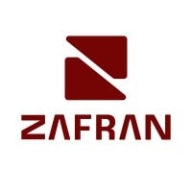


Microsoft Defender for Cloud and NodeZero Platform are prominent in cybersecurity solutions, each bringing unique strengths to the table. Microsoft Defender's seamless integration with Azure services gives it an edge in environments heavily reliant on Azure, while NodeZero stands out for its affordability and usability, which is appealing to diverse organizations.
Features: Microsoft Defender for Cloud is noted for comprehensive visibility, threat intelligence, and integration with Azure. It effectively manages security across multi-cloud environments providing enriched data for policy compliance and dynamic alerting. NodeZero Platform is highlighted for ease of deployment and automated testing capabilities. Its real attack simulations and ability to instantly retest vulnerabilities are emphasized as practical solutions that offer advantages over traditional penetration testing methods.
Room for Improvement: Microsoft Defender for Cloud users encounter challenges with false positives, complex setup processes, and integration across different subscriptions. Pricing transparency, agent features, and enhanced real-time monitoring are also required improvements. NodeZero Platform could enhance its report readability and usability for various teams. Speed improvements in scanning and more integrations with additional vulnerability tools would further enhance its utility.
Ease of Deployment and Customer Service: Microsoft Defender for Cloud benefits from its Azure integration, yet faces criticism for complicated policy management and inconsistent technical support. NodeZero Platform receives positive reviews for its intuitive setup, enabling quick deployment with minimal technical challenges. Its responsive customer service enhances user experience and ease of use, catering to different infrastructure needs.
Pricing and ROI: Microsoft Defender for Cloud is perceived as costly, particularly suited for larger enterprises using Azure. Its ROI is driven by strong security visibility and reduced administration, though pricing complexity remains an issue. NodeZero Platform is lauded for competitive pricing similar to traditional pen tests but with greater flexibility. Its cost-effective, adaptable licensing delivers high ROI through systematic vulnerability scanning and management.
| Product | Market Share (%) |
|---|---|
| Microsoft Defender for Cloud | 4.8% |
| The NodeZero Platform | 1.2% |
| Zafran Security | 1.1% |
| Other | 92.9% |



| Company Size | Count |
|---|---|
| Small Business | 26 |
| Midsize Enterprise | 7 |
| Large Enterprise | 45 |
| Company Size | Count |
|---|---|
| Small Business | 6 |
| Midsize Enterprise | 1 |
| Large Enterprise | 4 |
Zafran Security integrates with existing security tools to identify and mitigate vulnerabilities effectively, proving that most critical vulnerabilities are not exploitable, optimizing threat management.
Zafran Security introduces an innovative operating model for managing security threats and vulnerabilities. By leveraging the threat exposure management platform, it pinpoints and prioritizes exploitable vulnerabilities, reducing risk through immediate remediation. This platform enhances your hybrid cloud security by normalizing vulnerability signals and integrating specific IT context data, such as CVE runtime presence and internet asset reachability, into its analysis. No longer reliant on patch windows, Zafran Security allows you to manage risks actively.
What are the key features of Zafran Security?
What benefits can users expect from Zafran Security?
In industries where security is paramount, such as finance and healthcare, Zafran Security provides invaluable protection by ensuring that only exploitable vulnerabilities are addressed. It allows entities to maintain robust security measures while allocating resources efficiently, fitting seamlessly into existing security strategies.
Microsoft Defender for Cloud is a comprehensive security solution that provides advanced threat protection for cloud workloads. It offers real-time visibility into the security posture of cloud environments, enabling organizations to quickly identify and respond to potential threats. With its advanced machine learning capabilities, Microsoft Defender for Cloud can detect and block sophisticated attacks, including zero-day exploits and fileless malware.
The solution also provides automated remediation capabilities, allowing security teams to quickly and easily respond to security incidents. With Microsoft Defender for Cloud, organizations can ensure the security and compliance of their cloud workloads, while reducing the burden on their security teams.
NodeZero by Horizon3.ai is an offensive security platform that enables users to adopt an attacker’s perspective, reveal vulnerabilities, and verify defense effectiveness with evidence-backed insights.
NodeZero provides autonomous pentesting, showing how attackers exploit misconfigurations, credentials, and exposures into attack paths. It helps focus on real risks rather than hypothetical ones, integrating seamlessly into existing IT and security workflows to streamline processes. The platform drives risk-based vulnerability management and CTEM by validating vulnerabilities and measuring resilience.
What standout features improve your security?NodeZero assists in automated penetration testing and vulnerability management in industries like finance and healthcare. It enhances security processes by complementing or replacing existing solutions, enabling efficient testing, feedback, and control validation.
We monitor all Vulnerability Management reviews to prevent fraudulent reviews and keep review quality high. We do not post reviews by company employees or direct competitors. We validate each review for authenticity via cross-reference with LinkedIn, and personal follow-up with the reviewer when necessary.